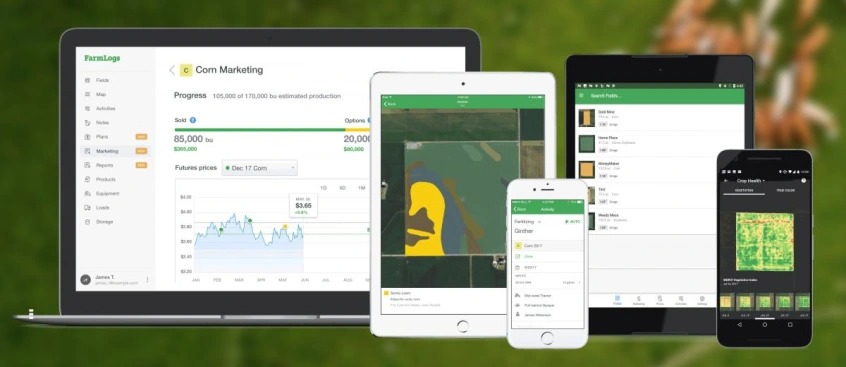
Open Source Farming
Dec 19 2019

Benchmark the value of your agtech software expectations by reviewing options for (nearly) free solutions.
The abundance of emerging agtech may be able to solve any problem a farmer may have, but the upfront costs and ongoing subscription fees can bring expenses through the roof. Taking into consideration that the growing agtech sector can be pricey and ill-suited for smaller operations, here are a few new companies aiming to make farm management software free, fair, and more accessible.
Cropio allows you to use satellite technology and other data to make decisions on irrigation and fertilizer application. The service costs 40 cents to $2 per acre per year. Users love the simplicity, ease of use and the regular updates and improvements. It requires very little if any training to use.
Harvest Profit’s farm management software allow producers to track their P&L in real-time giving them the confidence to make less emotional and more profit-focused farm business decisions. Basically, allowing you to measure revenue and analyze field-by-field profits. At $1,500 per year it isn’t cheap but a consulting package that includes personalized calls twice per month goes for more than five times that.
Croptracker is a solution that manages everything from worker punchcards to spraying events to RFID harvest tracking. They offer a per-service pricing plan that starts as low as $5 per user per month, but that scales up to a couple of hundred dollars for more comprehensive packages. This makes it significantly cheaper than Granular, Conservis, Agworld, and others for smaller farms.
Now, watch this Open Source story video (10mins but very good). In this video they talk about using software like farmOS which is a web-based application for farm management, planning, and record keeping. It is developed by a community of farmers, developers, researchers, and organizations with the aim of providing a standard platform for agricultural data collection and management. It is licensed under the GNU General Public License, which means they are free and open source.
“The farmOS server is built on top of Drupal, which makes it modular, extensible, and secure. The farmOS Field Kit app provides offline data entry in a native Android/iOS app, and as a progressive web app (PWA)”
That’s right. Free. Nobody is mining it or monetising it in any way. It’s yours. You can export it in whatever way you want.” And it is infinitely customisable if you’re tech savvy. “Since it’s open source, you can change the code, if you want to do your own customizations.
farmOS isn’t the only option for those seeking open-source alternatives, but it reflects the recent iteration of the open source farming movement, which emerged 15 years ago with a website on which farmers shared designs for hand tools and tractor implements. The scrappy movement has since evolved into an online community seeking to make the most advanced digital technologies of precision farming available to everyone.
Developers are building additional farmOS modules—which will become open source—to help farmers organize additional activities such as animal movement through paddocks. Enterprising farmers can even hack together their own “smart farm” by connecting low-cost soil moisture sensors, greenhouse humidity monitors and other hardware to $35 Raspberry Pi computer kits that can feed the data into farmOS.
Posted in Practical Advice
You Might Also Like
Feb 24 2024
National Farmers’ Federation develops Australian Farm Data Code
The Australian Farm Data Code aims to promote adoption of digital technology by ensuring that farmers are comfortable in how their data is used, shared and managed. Developed and adopted by…
Read MoreAug 11 2023
NFF Australian Farm Data Code
Calling all AgTechs that are collecting, managing, or sharing, farm data! Australian farmers are demanding more transparency and control over how their farm data is managed. In response, the National Farmers’ Federation…
Read MoreJul 19 2022
Five questions to answer before considering AgTech adoption
AgTech adoption can often seem a daunting process. There’s a range of factors you will need to consider before you begin looking for the right solution. This update is authored by Andrew…
Read MoreApr 14 2022
Six Agtech Solutions You Can Connect Right Now
With farms across Australia producing more data than ever, AgTech Finder spoke with award-winning AgTech company Pairtree about how integrating information from multiple devices in their easy-to-use dashboard can unlock the full benefit of data for…
Read MoreList your company on AgTech Finder.
AgTech Finder helps Australian Farmers and producers find the product that’s right for them.
Register now to be a part of the community, get access to a national platform and start gaining insights to improve your products.
